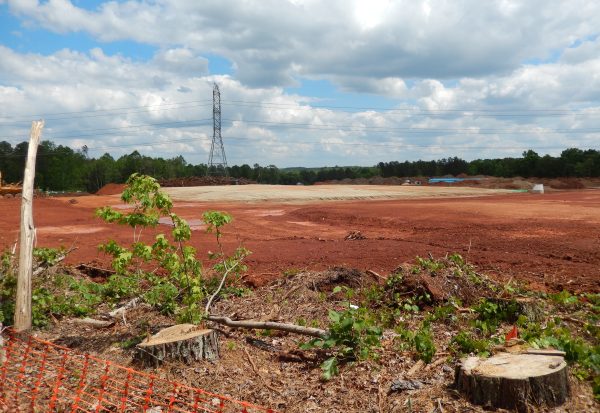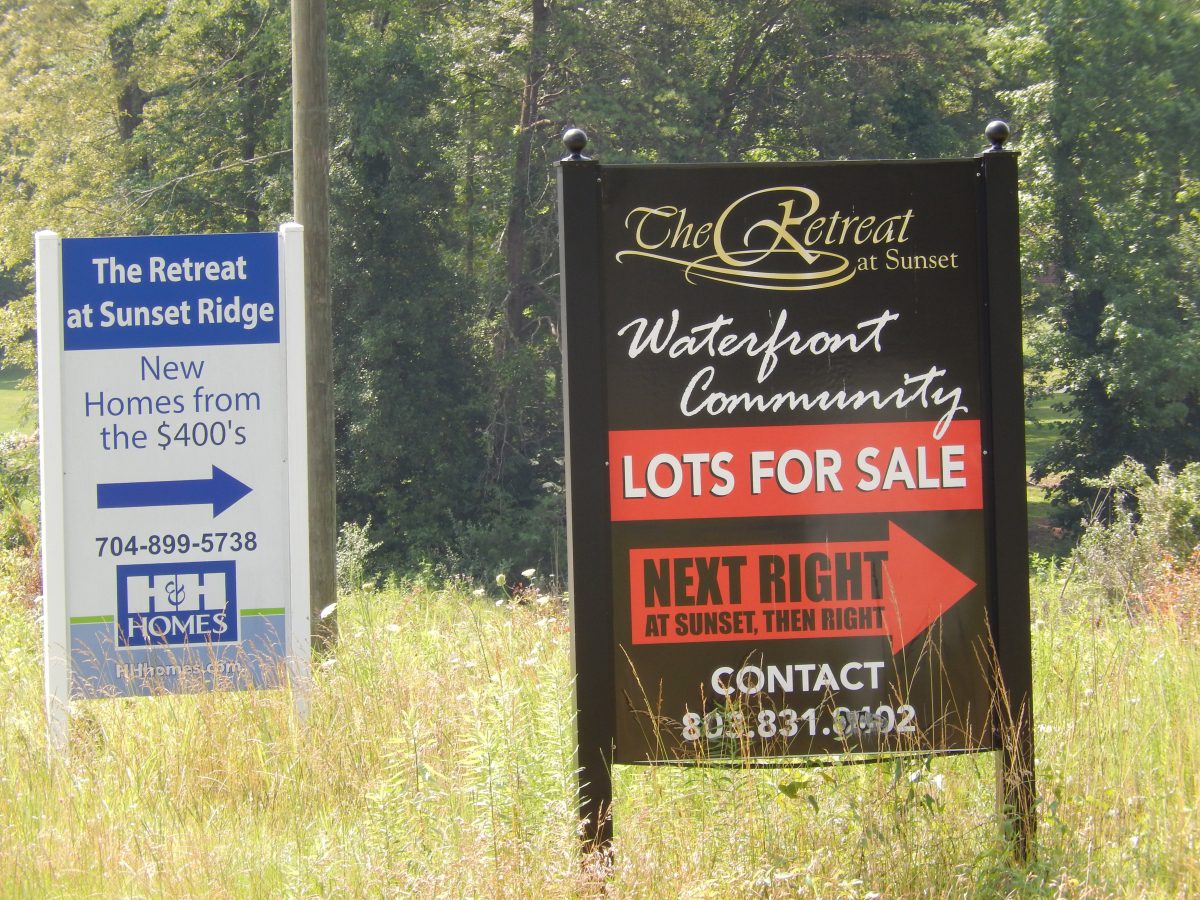Booming York County growth provokes zoning, impact fee debates

From the woods surrounding her Lake Wylie home, Nancy Hayes watches turkeys, deer, raccoons and other animals, including a pair of bald eagles. The wildlife is threatened, she says, by a residential development proposed for more than 400 homes, and she’s angry about it.
“It’s outrageous,” says Hayes, who moved to the area three years ago from another York County, S.C., community. “If they go in there and rape that property there is nothing going to be there for the eagles. If they keep ripping up property and all the forests and woods, where are the animals going to go?”
[highlight] Lancaster County sees fighting over growth on Charlotte’s southern border [/highlight]
In York County’s unincorporated Lake Wylie, the pace of growth is aggravating residents who worry not only that officials aren’t paying enough attention to the impact on the environment and wildlife, but that they aren’t moving aggressively to deal with traffic congestion and other problems in the area.
For larger view, click image
“You can’t just keep having one development on top of another and all this clear cutting,” says York County Council member Bruce Henderson, who represents the Lake Wylie area and has been unsuccessful in efforts to win approval of growth restrictions. “It’s a formula for disaster. If we’re going to do what we’ve always done, it going to create a situation that will destroy the lake.”
York County, like neighboring Lancaster County, S.C., is struggling to manage rapid growth in its urbanizing communities closest to Charlotte, one of the fastest-growing cities in the nation. Lake Wylie, once a rural retreat for those seeking easy access to boating and other activities of lake life, more than tripled in size 2000-2014, growing 215 percent, according to the U.S. Census. Other York County towns also boomed. The town of Tega Cay, which also includes lakefront properties, increased 103 percent while population in Fort Mill jumped 59 percent.
In Lake Wylie, a group of business leaders and residents recently formed a study committee to determine whether an effort should be launched to seek a referendum on incorporating as a town. The committee hopes to decide in early 2017.
“We feel like we don’t get fair representation in the county because we are unincorporated, and elected officials take us for granted,” says Charles Wood, chairman of the exploratory committee and chairman of the Lake Wylie Chamber of Commerce. Many residents, he adds, are dissatisfied with the way the County Council approves development and with the increasing traffic congestion on S.C. 49 – the main highway through Lake Wylie which becomes Tryon Street across the N.C. state line and leads to uptown Charlotte.
“Taxpayers are expecting results, good police coverage, road repair and other services,” says Wood. “We continue to feel as if we’ve been abused and abused.”
Critics of the York County Council say its members in recent years have been slow to agree on proposed growth strategies while municipal officials in Fort Mill and Tega Cay have been more nimble in dealing with the challenges. Along with the urbanizing areas on the north side of York County, the seven-member county council also represents more rural, slower growing communities to the south with strong sentiments for individual property rights.

Signs of booming development along Lake Wylie Road in York County, S.C. Photo: Mae Israel
In 2011, the council tabled a proposed unified development ordinance and in 2014 decided against approving a special zoning district, known as a zoning overlay, for Lake Wylie to strengthen restrictions on development near the lake, which provides drinking water to the area. Some Lake Wylie residents pushed for tighter guidelines to protect the lake and the quality of life, including restricting residential development within a certain distance from the lake to large-lot single-family.
After rejecting the zoning overlay, officials in the fall of 2015 approved countywide zoning text amendments which reduced density in all residential districts and eliminated multifamily housing from three zoning districts, allowing them in only two categories clustered mostly along major thoroughfares. The new guidelines, however, do not affect previously approved construction.
“This is going to have a major impact,” says York County Planning Manager Steve Allen.
Over the past few months, the County Council considered and rejected a proposal for a moratorium on rezonings in the unincorporated area off Interstate 77 near Fort Mill. A proposal surfaced again to study guidelines for a special zoning district in Lake Wylie.
The planning staff, meanwhile, has been developing a comprehensive plan to guide growth in the unincorporated areas of the county. A final County Council decision is expected in July.
Graphic: Laura Simmons. Data: U.S. Census
In Fort Mill, town officials looking for a way to help pay for the increased services required for a growing population are beginning to get some help from developers.
Since October 2015, the town has been assessing impact fees on new residential development to help pay for parks and recreation, fire protection, police and municipal facilities capital projects. By April, the town had collected $661,000, most of which will be used for parks and recreation.
Fort Mill is among about 10 jurisdictions in South Carolina that have implemented impact fees. Rock Hill began charging fees a few years ago; most of the other areas are along the coast. (All but a few N.C. counties and municipalities lack the state-granted authority to enact impact fees.)

From wooded property near her Lake Wylie home, Nancy Hayes can spot bald eagles. She fears for their fate as trees fall for development. Photo: Nancy Hayes
“One of the things our town council has always talked about is we need to make growth pay for growth,” says Fort Mill Planning Director Joe Cronin. “If we don’t have a dedicated funding source to pay, we would have to issue bonds and increase property taxes. Impact fees will not pay the full cost but will reduce the amount passed on to existing taxpayers.”
Among proposed developments is a massive mixed-use project that would include 2,900 houses, at least 350,000 square feet of commercial space and 60 acres for parks and recreation. Property owner John Spratt, a former U.S. representative, is seeking to get nearly 700 acres annexed from unincorporated York County into Fort Mill and rezoned for the project. The town council, which has tentatively approved the development, is scheduled to make a final vote Monday.
Back in Lake Wylie, Nancy Hayes and her companion Ted Stropki are lamenting the loss of the ecosystem surrounding their 4½-acre lot. They also lament the future development headed for the remaining properties with some water frontage along Lake Wylie and its inlets.
According to planners, developers have already expressed intent to develop all of the remaining large parcels with water frontage, about 2,000 acres. One is adjacent to Hayes and Stropki’s land: the proposed Meriway development calling for 449 homes on 221 acres. Only 150 homes have been approved so far.
“It’s going to break our hearts when they tear down all these trees,” says Stropki. “All this will be destroyed in the name of progress. You have to think of the future. You can’t just build, build, build. Why not conserve some of it?’’

